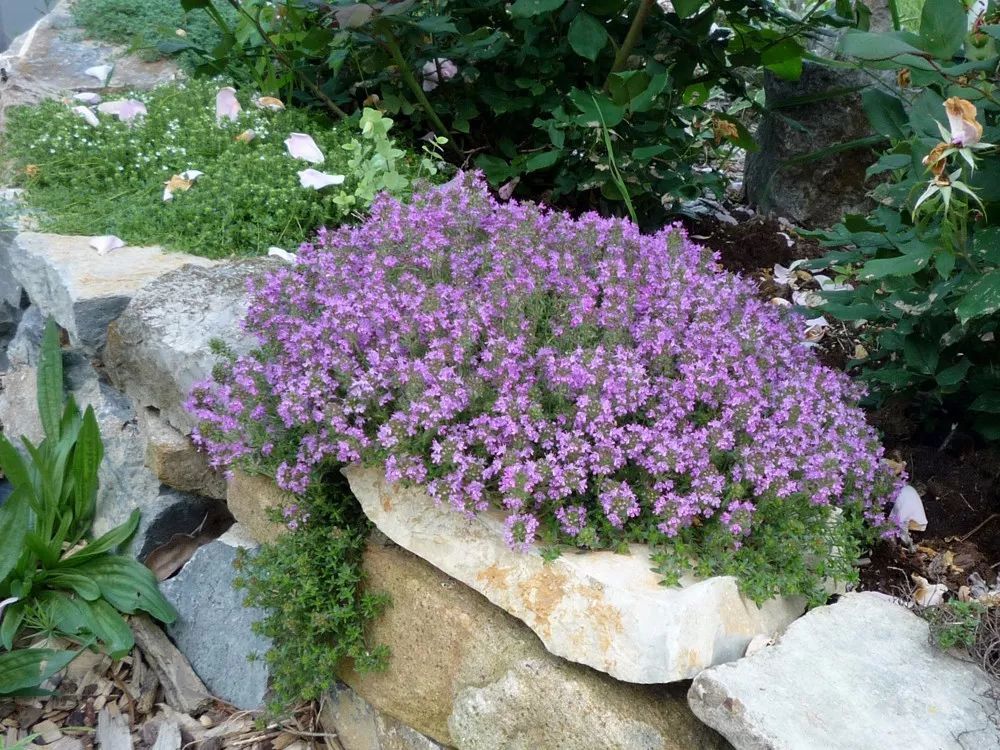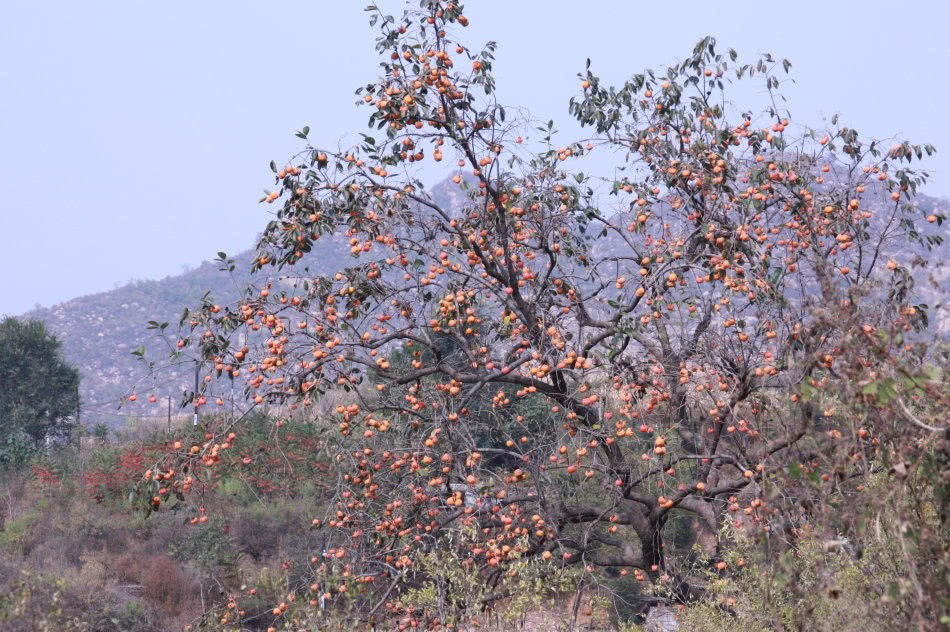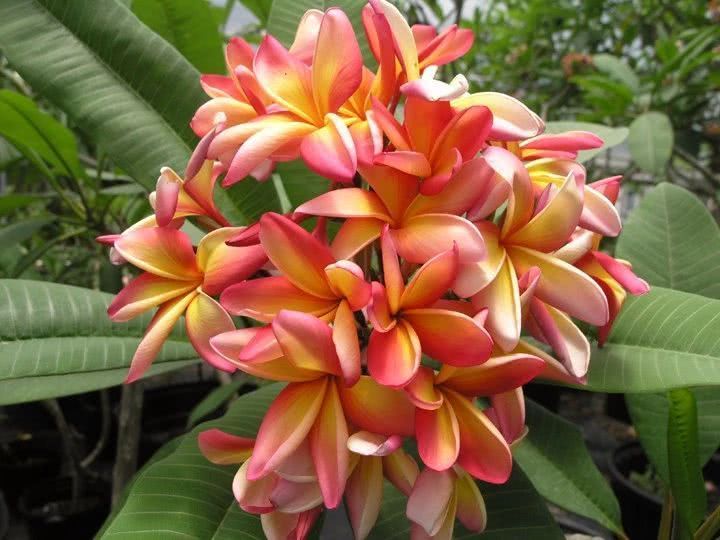Planted on the side of the slate road, it won't die if you trample on it, thyme and carpet-like flowers.

If you want to plant some beautiful and charming creeping plants next to the stone, thyme is a good choice. It blossoms very vigorously and grows easily. It will not die if planted in the yard. It is a good lawn instead of plant.
The thyme planted in the yard grows very fast, the maintenance cost is very low, and it can be trampled. It has many varieties. My favorite is red thyme, which can produce purplish red flowers and grow very low. It has very small leaves and delicate flowers.
Paving thyme is very suitable for filling the gap between slate roads. It does not need to be pruned frequently, and it can also become a beautiful scene in the yard when it blossoms.
The environment of planting and laying thyme is very simple, it needs more light and likes the soil with good drainage. In the process of conservation, we must pay attention to maintaining the good drainage of the soil and avoid stagnant water. You can add some river sand or perlite to the yard to maintain good drainage and air permeability.
Compared with other ornamental grasses, thyme grows very fast and can endure more people to trample on it. Its leaves are very beautiful and can produce delicate flowers. Moreover, it is a perennial plant that can be planted once, and then it can grow on its own.
Another advantage of growing thyme is that its flowers have a charming fragrance, and its branches and leaves are edible and can be used to make tea or herbs.
There is another very good thing about planting thyme. It is rarely infected with diseases and insect pests and has a strong ability to adapt to the environment.
The location of planting and laying thyme should have more than four hours of direct light every day, and the cultivated soil should choose sandy soil with loose air permeability and good drainage.
In the process of planting, it is necessary to avoid excessive soil moisture, it has a better ability to withstand cold and drought, but it should avoid freezing in the first year of planting, and the minimum maintenance temperature should be kept above five degrees.
Paving thyme is very drought-resistant, as long as it is planted in the soil, it does not need regular management. It is necessary to keep the soil moist in the first two weeks of cultivation, and can not be watered regularly after two weeks of maintenance.
Planting thyme does not need frequent pruning, they will continue to grow branches, the growth process should be timely removal of residual flowers, which is conducive to the breeding of more flowers, the maintenance process is to regularly remove weeds to avoid consuming too much nutrients.
Laying thyme does not need regular fertilization, it is more resistant to barren, you can just delisting when adding some rotten organic fertilizer, so that it can grow well.
When the temperature is too low in winter, you can cover the soil with peat, rotten sawdust or other mulch to avoid frostbite.
If you want to breed thyme, it is also very simple. You can carry out cutting propagation in the spring and autumn season. You can directly cut a branch about 7cm long, remove the leaves at the bottom, touch a little rooting powder at the bottom, and cut them in the slightly moist sandy soil. You can first cultivate it in a small flowerpot and then transplant it to the soil after it grows steadily.
- Prev

Two people can have enough to eat. The north is often unsalable, but in the south, it costs ten yuan a jin.
Growing up in every place has the advantages of growing up in every place. Many people say that they do not want to live in the countryside. In fact, they do not know how many benefits of living in the countryside. In the countryside, we can always eat all kinds of fresh vegetables.
- Next

Frangipani can master these skills from seeds to large potted plants that bloom.
Egg flower is a tropical flowering plant that loses its leaves in winter and resumes growth when spring is warm. It can produce very delicate and charming flowers, the color is very charming, there are some varieties of flowers seem to be scattered.
Related
- Wuhan Hospital Iron Tree Blooming Result Was Instantly Frightened by the Gardener Master
- Which variety of camellia is the most fragrant and best? Which one do you like best?
- What is the small blue coat, the breeding methods and matters needing attention of the succulent plant
- Dormancy time and maintenance management of succulent plants during dormancy
- Minas succulent how to raise, Minas succulent plant pictures
- What are the varieties of winter succulent plants
- How to raise succulent plants in twelve rolls? let's take a look at some experience of breeding twelve rolls.
- Attention should be paid to water control for succulent plants during dormant period (winter and summer)
- Watering experience of twelve rolls of succulent plants
- Techniques for fertilizing succulent plants. An article will let you know how to fertilize succulent plants.

